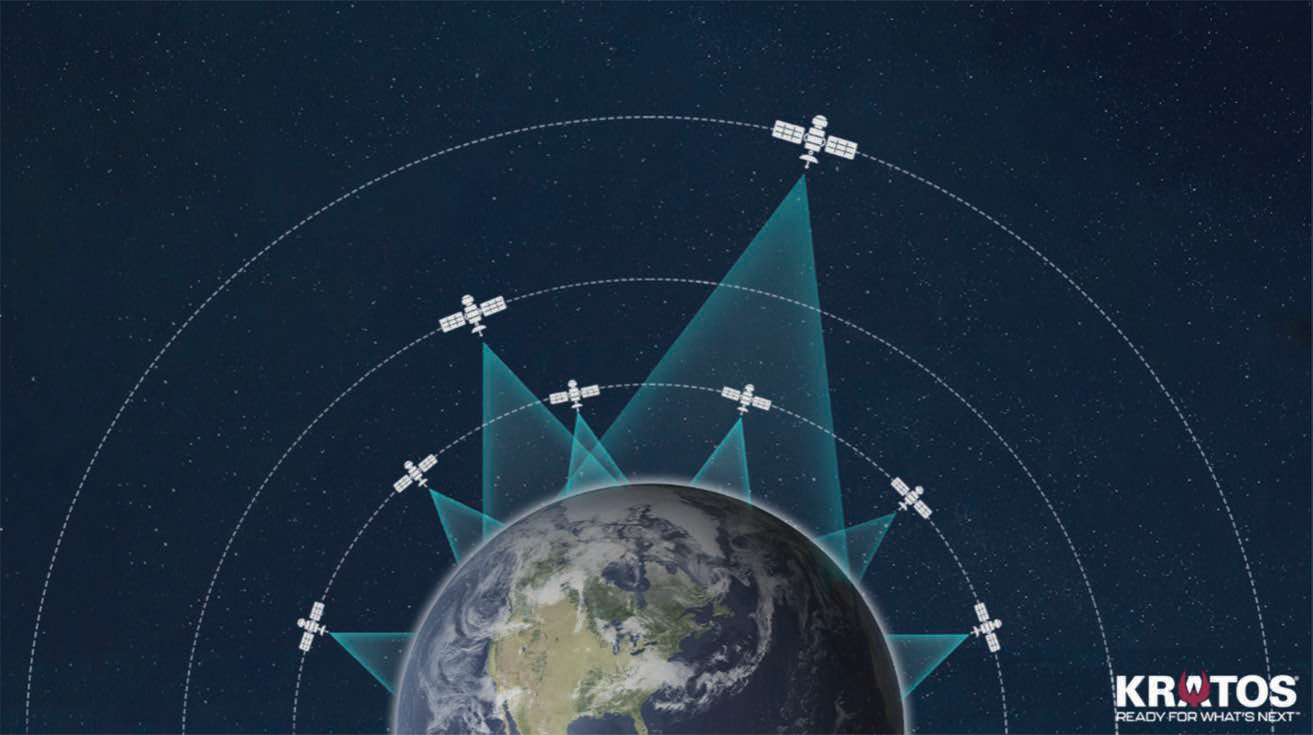Chris Badgett, Vice President of Technology, Kratos Space
_________________
LEO’s RF Puzzle
_________________
With hundreds of satellites passing overhead each hour, the ground segment must stay ahead, especially when monitoring and managing Radio Frequency (RF) activity in Low Earth Orbit (LEO).

The ability to detect, interpret and respond to RF signals in real-time is becoming just as vital as knowing where a satellite is located in space, particularly when LEO is a growing focus for both military and commercial operations.
The high density and mobility of satellites in LEO creates complex RF environments and requires systems that can quickly identify signal sources, satellite ownership and potential interference impacts.
_________________________________
Recognizing Authentic Signals
_________________________________
Ground stations supporting LEO satellites face growing challenges in space domain awareness (SDA) due to the sheer number of RF emitters now on-orbit. As new LEO constellations come online, it becomes harder to separate legitimate signals from interference.
Without precise visibility into the spectral landscape, operators risk degraded performance, dropped links or complete service loss—particularly in time-sensitive missions such as defense communications and Earth Observation (EO).
Recognizing signals accurately is essential for managing spectrum traffic and keeping shared frequencies free of interference.
__________________________________
The Strain on Shared Spectrum
__________________________________
One of the most pressing SDA concerns in LEO operations is spectrum coordination and interference mitigation.
Unlike GEO satellites which operate in stable, fixed positions, LEO satellites move rapidly across the sky, requiring dynamic frequency sharing. This movement may increase RF conflicts between satellites—whether from different LEO constellations or between LEO and GEO systems.
_____________________
Finding the Source
_____________________
Ground systems must monitor their own signal paths as well as nearby satellites that are transmitting on overlapping frequencies. This is challenging, as some operators may not know how to correctly monitor downlinks to detect interference.
Misidentifying the source of the interference, whether from a specific satellite or a constellation, can lead to wasted time and misdirected troubleshooting. Determining whether an issue is related to an uplink or downlink and which operator is responsible can be quite difficult.
_________________________
Situational Awareness
_________________________
LEO-based solutions are becoming a critical component of modern defense strategies as governments seek to enhance space-situational awareness, intelligence, surveillance and reconnaissance (ISR) capabilities. Traditional SDA focuses on tracking objects, but RF-based awareness reveals more—such as which satellites are actively transmitting over a region. This insight can be critical for monitoring activity and understanding specific threats.
As satellite activity increases across LEO, MEO and GEO, overlapping RF signals create a complex environment that demands advanced ground-based monitoring and coordination to avoid interference and ensure mission success.
Kratos is a leader in RF monitoring, providing solutions to satellite operators, armed forces and regulators. Kratos has partnered with global regulators, government agencies and commercial operators to design and implement advanced systems that proactively identify and mitigate interference—ensuring seamless and reliable communications.
www.kratosdefense.com/systems-and-platforms/space-systems

Chris Badgett
Author Chris Badgett is Vice President of Technology for Kratos Space. Prior to Kratos, Mr. Badgett served in the Air Force Research Lab (AFRL) and Space and Missile System Center enabling technologies for UAVs, datalinks, small satellites and ground systems. Mr. Badgett holds a BS in Electrical Engineering from University of Tennessee and an MS in Space Systems from the Air Force Institute of Technology.


